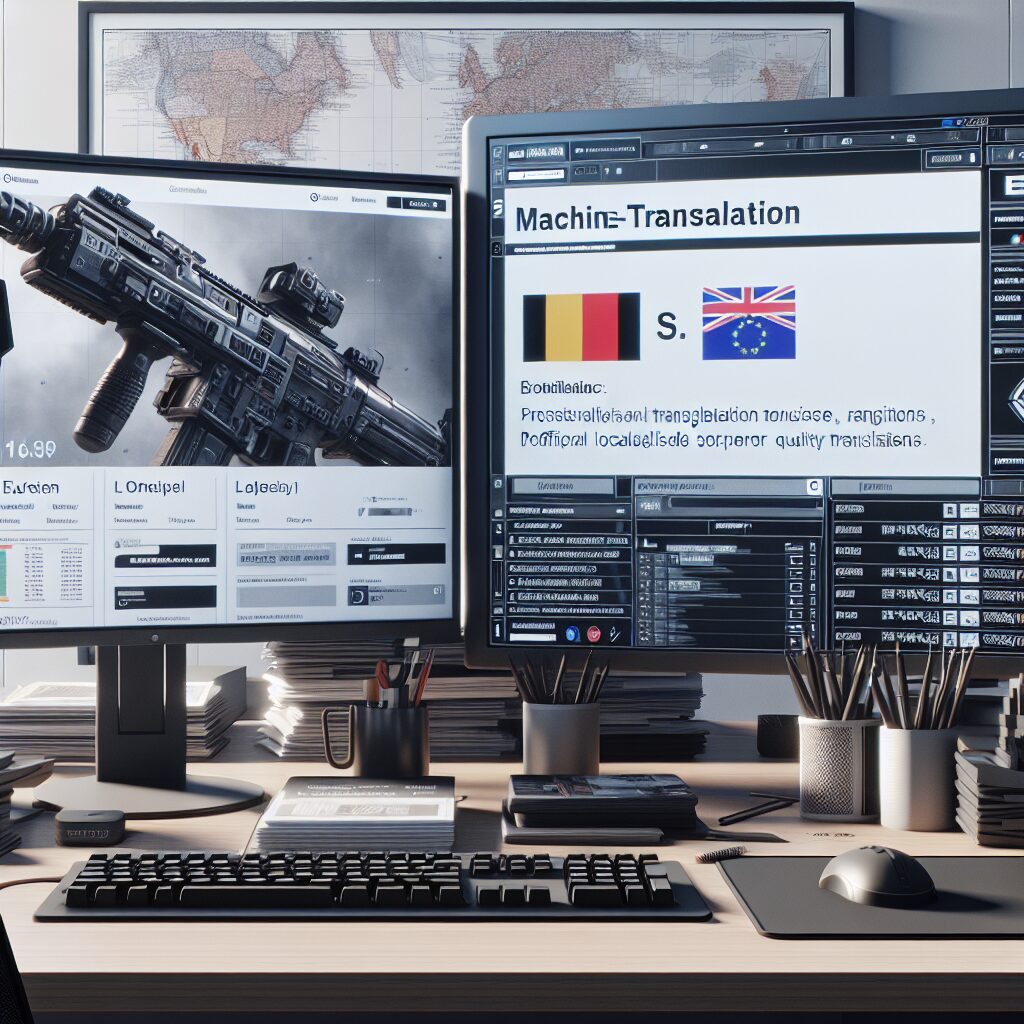About eldris
Clone.Eldris.ai empowers brands to instantly replicate and translate their websites for seamless global expansion. Our automated system delivers SEO-friendly, multilingual clones that launch in days, not months.
In This Article
- Machine translation offers speed and affordability — ideal for rapid scaling of basic content.
- Professional services deliver accuracy, cultural relevance, and compliance with EU regulations.
- Understanding when to mix both approaches maximises impact while managing budget.
- SEO effectiveness is tightly linked to translation quality and localisation practices.
- Make strategic choices based on content type, customer expectation, and legal exposure.
Translation Strategies for EU Market Expansion
Understanding Multilingual Challenges
When businesses aim to enter or scale within the European Union, language becomes both a challenge and a cornerstone of strategic success. From legal contracts to ecommerce descriptions, having the ability to communicate accurately in more than 24 official languages is no minor feat. This is where machine translation plays an increasingly critical role in the multilingual digital economy. However, despite its speed and accessibility, this technology is not always the optimal choice — particularly in matters requiring cultural nuance, legal precision, or brand consistency. Factors such as localisation, compliance with EU regulations, and long-term scalability also carry significant weight. Which is the better option: an automated plugin or a seasoned professional linguist? The answer lies in understanding the trade-offs, technical capabilities, and overall business vision.

Machine Translation Plugins: Pros and Cons
Speed, Automation, and Limitations
Machine translation plugins have become a popular solution among startups and SMEs looking to quickly localise digital content. Engineered to deliver near-instant translations, these tools integrate directly into website content management systems, offering a plug-and-play solution with minimal technical friction. Platforms such as Google Translate, DeepL, and Microsoft Translator specialise in converting source text into a range of languages using artificial intelligence algorithms.
The primary advantage is speed. With a few clicks, brands can scale their content to multiple languages, reaching new audiences considerably faster than traditional methods ever allowed. Additionally, automatic translation can reduce upfront costs and eliminate wait times caused by human project cycles.
However, drawbacks emerge — especially when precision matters. Machine translation tends to struggle with industry-specific vocabulary, idiomatic expressions, and tone. Errors often arise in grammar or contextual relevancy. For ecommerce businesses, medical platforms, or legal pages, mistranslations can damage credibility and even lead to regulatory violations. Furthermore, the absence of cultural nuance might create unintended meanings that alienate target demographics. Understanding professional and machine translation
“Machine translation breaks barriers—but without oversight, it may build new ones.”
Professional Services: Accuracy and Trust
Human Translation Strengths
While machine translation plugins have their merits, professional language services remain the gold standard for quality, accuracy, and brand alignment. Certified translators offer an array of linguistic and cultural knowledge that even the most advanced algorithms cannot replicate. Professional translation services involve nuanced understanding, localisation strategies, editorial oversight, and often sector-specific expertise.
Human translators also provide colloquial and contextual interpretations, preserving the original tone, intent, and message of your content. For instance, the phrase “kick-off meeting” — common in English-speaking workplaces — may require a different rendering depending on the cultural expectations of your target country. These subtle differences are generally lost to automated systems.
Moreover, professional services follow established quality assurance protocols. These range from terminology management and version control to review cycles and client feedback loops. The result is language output that is not only readable but resonant with your audience. In situations involving government tenders, medical documentation, or consumer rights, a single translation error can lead to litigation or loss of trust—something that machine translation is ill-equipped to handle. Learn more about Multilingual Website Localisation Strategies
Compliance and Localisation in the EU
Regulatory Considerations for Language
The European regulatory landscape imposes stringent linguistic standards, particularly in consumer protection, financial services, and data privacy. All member state citizens have the right to receive product information, contracts, and legal documents in their native language. Failure to meet these obligations has in some cases resulted in penalties, rejected filings, or customer service breakdowns.
Machine translation alone often fails to meet such standards due to the lack of accountability and verifiability. Unlike professional services—with audit trails and legally certified translators—machine-generated text cannot attest conformity. Furthermore, jurisdictions across the EU differ in dialects and formalities, requiring localisation instead of mere translation. For example, differences between Austrian and German dialects or Flemish and Belgian French may significantly alter the user experience.
Compliance, therefore, is not just about translating words — it’s ensuring those words are legally, culturally, and commercially valid. Read a related article
Cost Breakdown: Plugin vs Pro Service
Budgeting for Long-Term Success
Machine translation plugins are widely lauded for their cost-efficiency, often featuring usage-based or subscription pricing models that allow companies to minimise expenditure during early-stage expansion. Monthly fees may range between €20–€200 depending on the volume and feature set, making it financially feasible for bootstrapped operations or experiments in new markets.
Conversely, professional translation services command higher rates—typically charging per word or project, depending on complexity and subject matter. Technical fields like legal, finance, or medical translation may incur fees up to €0.20 per word or more. This may seem steep in comparison, yet for companies prioritising reliability, tone, or regulation, the investment offers considerable ROI.
Additionally, hidden costs arise with both systems. Machine translation may prompt costly revisions or brand rehabilitation if outputs are poorly received. Maintenance and integration for plugins may also necessitate developer hours. On the other hand, engaging professional translators involves administrative time, onboarding, and continuous relationship management. Optimising multi-language eCommerce sites
When to Use Plugins for Your EU Website
Ideal Scenarios and Use Cases
Machine translation plugins are most appropriate in scenarios favouring speed and breadth over depth. Blogs, user-generated content, internal knowledge bases, and time-sensitive updates benefit from rapid translation—even if some nuance is lost. They’re equally suitable for MVPs (minimum viable products), where the goal is to test multilingual traction without committing major capital.
In such contexts, plugins provide agility and scale unmatched by traditional methods. For seasonal retail promotions or fast-moving consumer items, machine translation can help capture fleeting trends across borders. It also serves niche markets where direct human translation wouldn’t be economically feasible due to low traffic volumes.
Nonetheless, companies must remain vigilant. Periodic audits by human reviewers remain essential to ensure quality hasn’t diminished user trust or aided misinformation. Hybrid models — where machines perform the initial translation which is then lightly edited by a human — offer a middle ground.
When to Use Professional Translation
Brand Integrity and Legal Accuracy
There are use cases where only professional translation will suffice. These are defined by three primary factors: brand voice, legal vulnerability, and market maturity. Enterprises with established reputations must ensure their tone, message, and values are preserved in every language. Similarly, regulated industries—such as pharmaceuticals, finance, and government contracting—require translations that are defensible in courts of law.
Product labelling, compliance documents, and customer contracts in the EU demand certified outputs. Professional linguists bring the training, sector familiarity, and localisation insight needed to meet such standards. Moreover, as markets mature and competition elevates, translation becomes less about basic accessibility and more about differentiation through quality and connection.
Performance and SEO Impacts
How Each Option Affects Multilingual SEO
Search engine optimisation (SEO) in multilingual environments is a decisive growth factor for EU expansion. Machine translation can sometimes work against this. Poorly translated titles, slugs, or metadata can hinder indexing or lexical relevance in target nations. Additionally, improper handling of hreflang tags — which command search engines to deliver language-specific pages — often occurs with plugin implementations that are not fully integrated with SEO tools.
Professional translation offers an edge, ensuring that every element — from meta descriptions and headers to link anchors — is crafted with precision. SEO specialists often collaborate with linguists to ensure keyword mapping aligns with native search behaviour, not simply translated equivalents. This enables higher engagement rates, better dwell times, and more backlinks from regional domains.
Scalability and Localization Tools
Future-Proofing EU Translations
Business growth strategies must consider how translation requirements will evolve. As content scales — across SKUs, landing pages, support documents, and legal frameworks — the difference between scalable and labour-intensive solutions becomes obvious. Machine translation shines here from a production standpoint, especially when paired with TMS (Translation Management Systems) that support glossary rules and integration with CRMs or CMS platforms.
However, scalability must not compromise quality. Ideally, a mixed approach would involve machine translation for first drafts of high-volume commodity content, with professional oversight introduced where sentiment, branding, or compliance matters most. Many advanced localisation tools now support collaborative workflows that blend AI efficiencies with human insight. Investing in such platforms now prepares an organisation for multilingual continuity without sacrificing control.
Decision Matrix: Which Option Wins?
Choose the Right Fit for Your Business
Ultimately, the ideal translation path depends entirely on your company’s operational goals, regulatory responsibilities, and branding priorities. For rapid, low-cost expansion, machine translation serves as an attractive launchpad. It enables faster iteration and market entry. However, if long-term retention, reputation, and compliance are paramount, professional translation is not optional—it is foundational.
Savvy businesses often adopt a dual strategy. By utilising machine translation for exploratory campaigns and reserving human expertise for flagship content, leadership can maximise both efficiency and excellence. Decision points such as content type, audience sensitivity, and legal exposure will help determine which tools or services are best suited to specific use cases. Continual review, feedback collection, and KPI analysis should inform the ongoing localisation strategy.
Final Thoughts on Multilingual Growth
As businesses compete for attention in a fragmented linguistic landscape, the right translation strategy becomes a critical differentiator. Whether you choose machine translation for its speed and budget appeal, professional translators for their nuanced understanding, or a hybrid pathway — clarity on objectives will drive success. EU market expansion is not just translation — it’s transformation.
Great guide on machine-translation-plugin-or-professional-service-eu-scale – Community Feedback
How do I choose between a translation plugin and a professional service?
Choose based on website complexity, quality expectations, and scalability needs. Plugins suit rapid multi-language rollouts, while professional services ensure higher accuracy and cultural adaptation for critical content.
Are machine translation plugins reliable for EU market compliance?
Machine translation plugins have improved, but may not always meet specific EU compliance standards. For legal, VAT, or customer-facing content, professional human review is recommended.
What are the cost differences between plugins and pro translation?
Plugins typically offer lower upfront costs and rapid deployment. Professional services cost more but deliver better accuracy and local market adaptation, especially for niche sectors or regulated industries.










